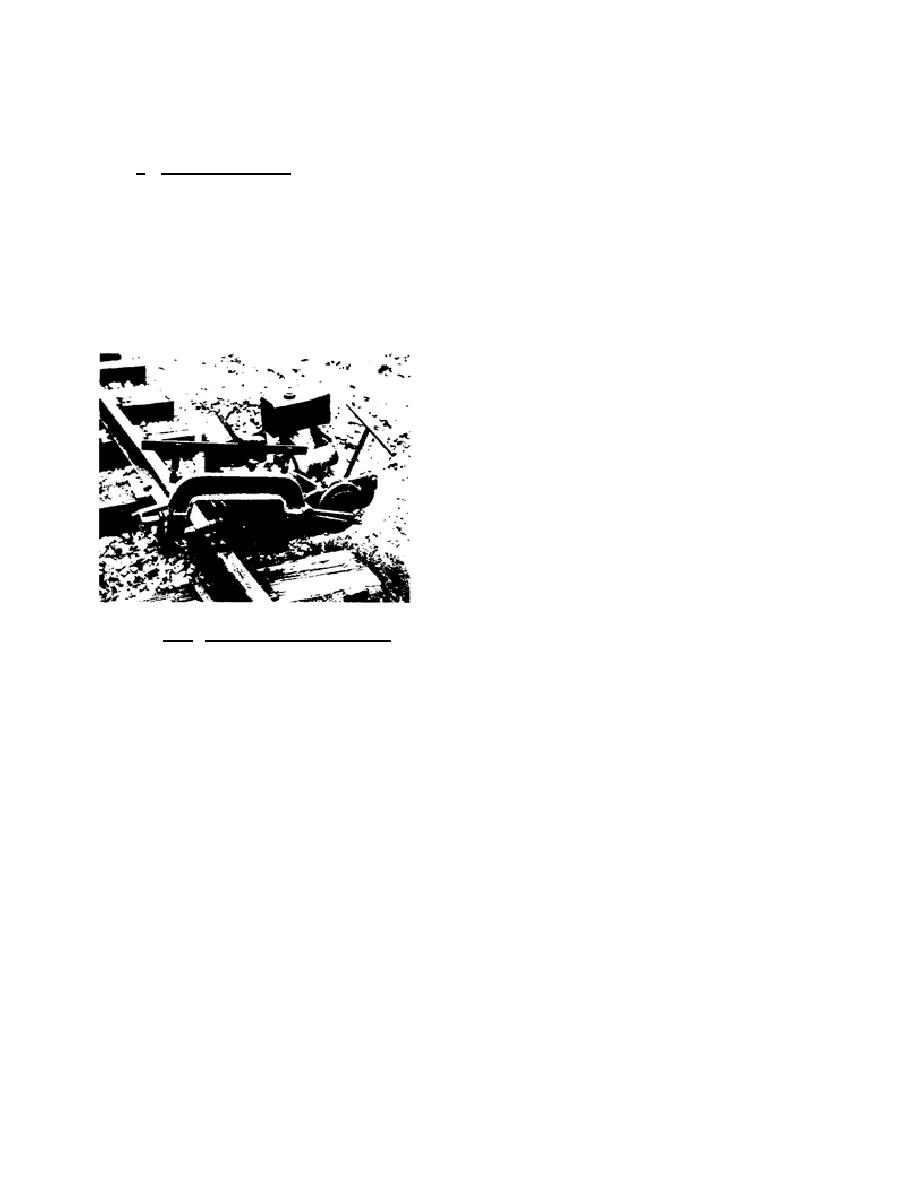
shown in figure 1.14. Next, the joint bars are tightened to the required pressure with a power track wrench, as
illustrated in figure 1.13. The last step in this phase of the work consists of fastening the rail anchors and
applying the signal bond wires (RT 670, par. 3.32).
d. Finishing the re-lay. A switch and utility gang of 6 to 12 men complete the re-lay. They take care of
the details on turnout installations, provide for temporary closures before trains arrive or at the end of the work
day, and tamp old joint locations. A cleanup train follows the switch and utility gang to pick up the old rail and
fastenings, leaving the roadway clean and free of obstructions.
1.16.
AFTER RE-LAY COMPLETION
New ties are installed where necessary and the track accurately lined and gaged (sec III) following the rail
re-lay.
These jobs are taken care of by the regular track crew, just as they were before
the re-lay. In addition, the crew collects and sorts
old rail, most of which is probably in fair condition.
Usable sections are prepared for re-laying in yards
and sidings and on branch lines. Rails with battered
ends are cropped with a rail saw, as shown in figure
1.19. Any new boltholes needed are drilled with a
power drill, as figure 1.20 illustrates. Some of the
rail is to be re-laid on the Turner Branch, thereby
substituting 115-pound RE-section rail for the 80-
pound AS-section rail now on this mining branch.
Figure 1.19. Gasoline-Powered Rail Saw.
1.17.
SUMMARY
Rails are replaced by either the spot or the out-of-face method. When individual rails in scattered
locations are found to have flaws, spot replacements are made, usually by hand. Out-of-face replacement, used
for renewing long stretches of rail, normally requires more men and specialized machinery. Because this work is
more involved, it must be carefully planned. Work is first done on one rail and then the entire procedure repeated
on the other one.
22



 Previous Page
Previous Page
